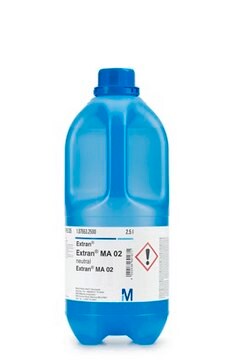47614
Fluram
BioReagent, suitable for fluorescence, ≥99.0% (UV)
Synonym(s):
Fluorescamine, 4-Phenylspiro-[furan-2(3H),1-phthalan]-3,3′-dione
About This Item
Recommended Products
product line
BioReagent
Assay
≥99.0% (UV)
mp
153-157 °C (lit.)
153-157 °C
solubility
acetonitrile: soluble
ethanol: soluble
fluorescence
λex 234 nm
λex 390 nm; λem 480 nm in 0.5 M borate pH 8.5 (after derivatization with L-leucine)
suitability
suitable for fluorescence
SMILES string
O=C1OC2(OC=C(C2=O)c3ccccc3)c4ccccc14
InChI
1S/C17H10O4/c18-15-13(11-6-2-1-3-7-11)10-20-17(15)14-9-5-4-8-12(14)16(19)21-17/h1-10H
InChI key
ZFKJVJIDPQDDFY-UHFFFAOYSA-N
Looking for similar products? Visit Product Comparison Guide
Application
Packaging
Legal Information
Storage Class Code
13 - Non Combustible Solids
WGK
WGK 3
Flash Point(F)
Not applicable
Flash Point(C)
Not applicable
Personal Protective Equipment
Certificates of Analysis (COA)
Search for Certificates of Analysis (COA) by entering the products Lot/Batch Number. Lot and Batch Numbers can be found on a product’s label following the words ‘Lot’ or ‘Batch’.
Already Own This Product?
Find documentation for the products that you have recently purchased in the Document Library.
Customers Also Viewed
Our team of scientists has experience in all areas of research including Life Science, Material Science, Chemical Synthesis, Chromatography, Analytical and many others.
Contact Technical Service









